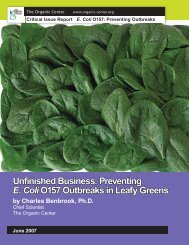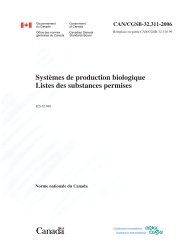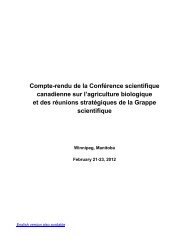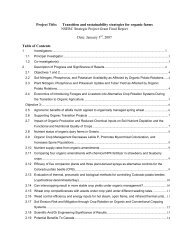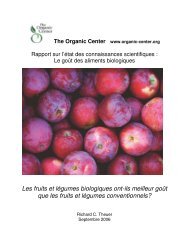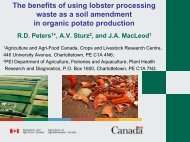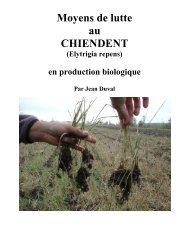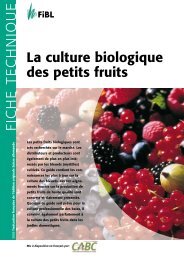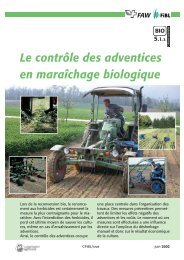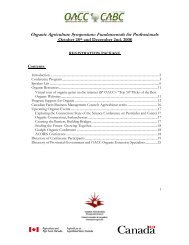Create successful ePaper yourself
Turn your PDF publications into a flip-book with our unique Google optimized e-Paper software.
Flame weeding works with garlic as well as with onions. At six commercial organic farms in<br />
Europe, flaming was tried on onions before the four-leaf stage and also later in their<br />
development (11). Flaming the younger plants resulted in damage to the onions. However,<br />
flaming at a later stage was successful, though too much heat damaged the onions. Flaming<br />
also works best with more mature garlic plants, and with the variety ‘Music.’ Field conditions<br />
such as uneven ground, inconsistent tractor speed, or high winds can affect the degree of<br />
success with this technique. For small-scale plantings, backpack flamers from construction<br />
supply outlets should work fine.<br />
Harvest and Storage<br />
Gauging the right time to harvest is very important. <strong>Garlic</strong> will double in size during its last<br />
month of growth, and if dug too soon, the skins won’t have formed around each clove. Hardneck<br />
bulbs, if dug too late, may have begun to spread apart in the soil. According to David<br />
Stern, harvest often begins when the leaf tips start to brown. Ron Engeland uses the number<br />
of green leaves left on the plant to judge if the bulb is ready for harvest. On an average, he<br />
harvests when about six plant leaves are still green. Some growers harvest when plants are<br />
40% browned and 60% green. Mr. Stern notes that leaf conditions will not give you certain<br />
knowledge that it is time to harvest. Browning of leaves may be the result of damage or<br />
disease. You need to dig up a plant to judge the bulbs. The outer skin should be tight, the<br />
bulbs fully developed and well formed. Mr. Stern recommends digging sooner rather than<br />
later. If garlic becomes too mature before harvest, the cloves will begin to crack apart while<br />
still in the ground. However, if the garlic is pulled at a slightly immature stage, the leaves,<br />
which serve as wrappers for the cloves, will continue to translocate nutrients to the cloves.<br />
In small-scale plantings, garlic can be dug with a garden fork. For larger acreages, several<br />
tools are available for undercutting and harvesting garlic. Bed lifters, potato diggers, or<br />
subsoilers can be used to loosen garlic from the soil. (These will not work if heavy mulch<br />
remains.) The <strong>Garlic</strong> Seed Foundation can provide information on building your own<br />
harvesting equipment or referrals to manufacturers.<br />
The garlic still needs to be removed from the field by hand. Field grading should be done<br />
immediately to remove any damaged or diseased plants, a standard practice for disease<br />
prevention. Sort garlic into three categories:<br />
• Small bulbs can be cleaned for sale or your own kitchen.<br />
• Medium-sized bulbs are cleaned in preparation for sale. One harvesting debate involves<br />
whether or not to wash bulbs. Ron Engeland states in Growing Great <strong>Garlic</strong> that he<br />
doesn’t want to invite mold and decay that might result from having wet bulbs as a<br />
result of washing, and that bulbs grown in light soils with lots of humus clean up fairly<br />
easily. <strong>Garlic</strong> grown in heavier soils is more difficult to clean. David Stern’s method for<br />
cleaning garlic begins by holding a bunch of 6–8 bulbs in one hand and spraying them<br />
with the garden hose while rotating his wrist so that all sides are washed. He then lays<br />
the garlic—not bunched—on racks in the greenhouse and off the ground to dry<br />
overnight. The plants are bunched the next day, and stay bunched until he is ready to<br />
6



